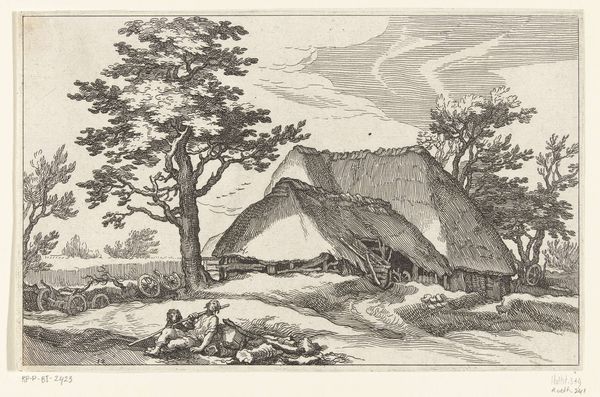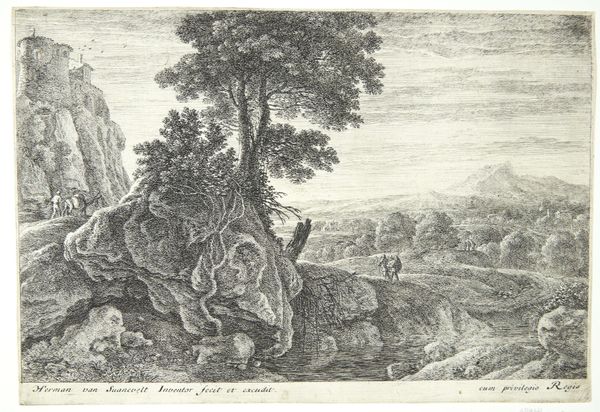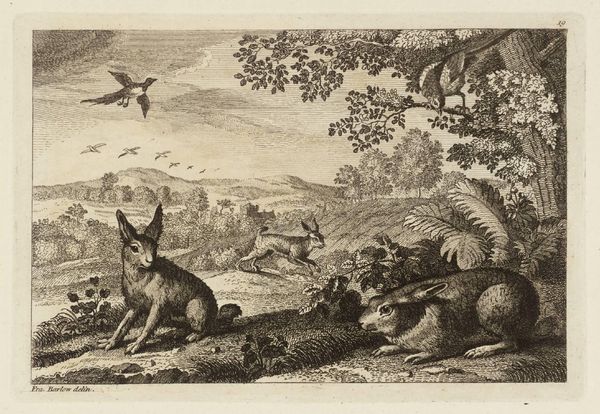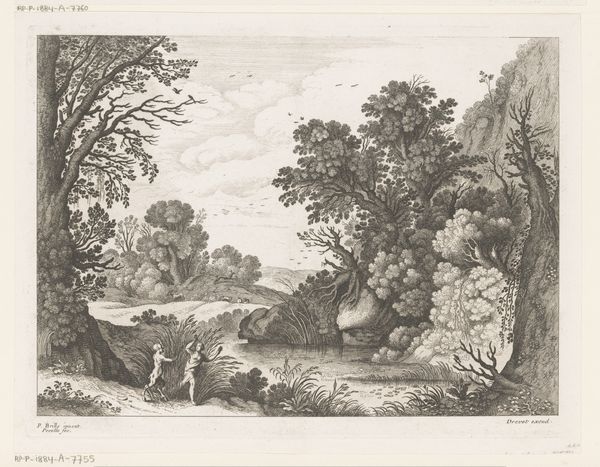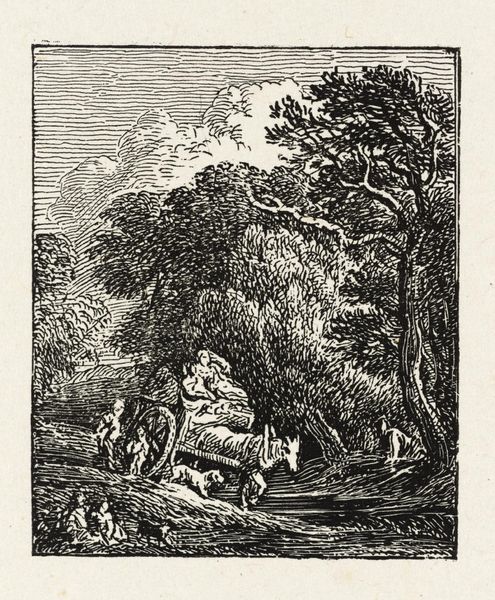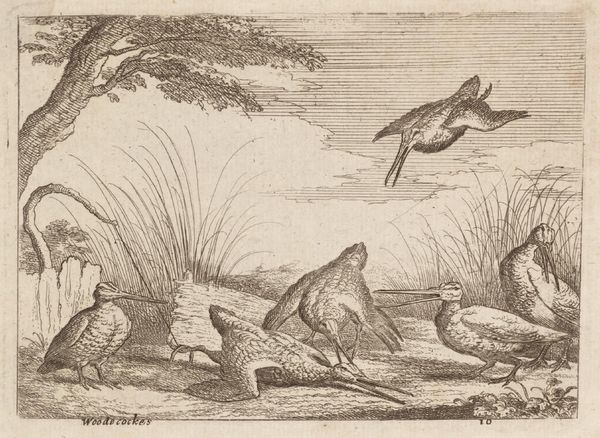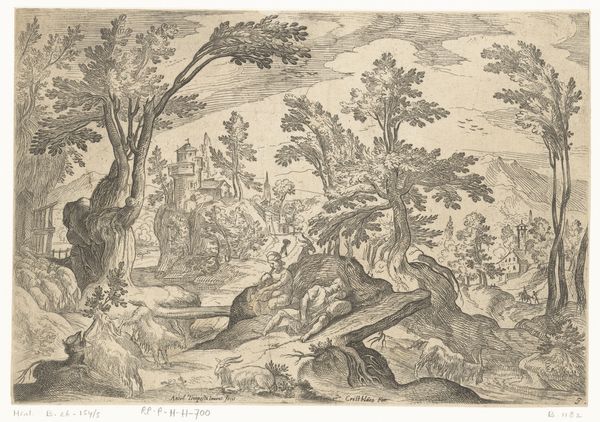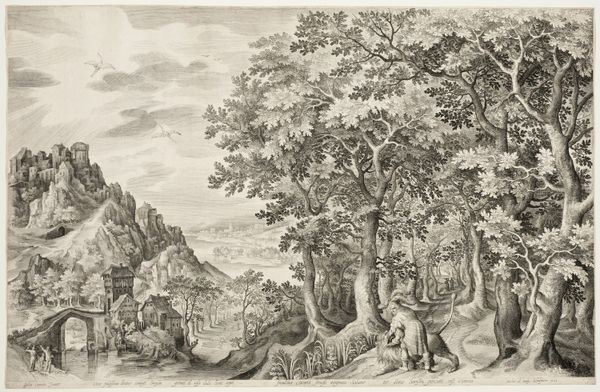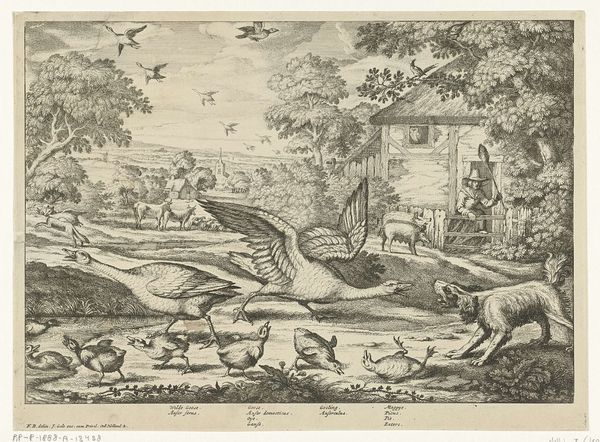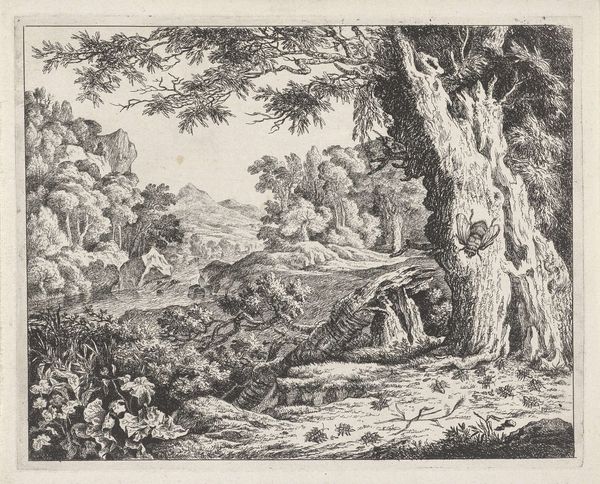
print, engraving
#
narrative-art
#
animal
#
dutch-golden-age
# print
#
landscape
#
genre-painting
#
history-painting
#
engraving
#
realism
Dimensions: height 150 mm, width 203 mm
Copyright: Rijks Museum: Open Domain
Curator: I find the formal composition of this engraving immediately striking, don't you? Editor: Certainly. It's fascinating to consider Jan Griffier's "Vechtende kippen," or "Fighting Chickens," crafted sometime between 1667 and 1718. Beyond the image, I am most struck by the artist’s involvement. I am interested in the socio-economic status of Griffier. I find the print market during the Dutch Golden Age especially compelling and look for insight into how the commercial markets were supported during that time. Curator: Well, speaking of the image itself, the dramatic interplay of light and shadow is masterfully achieved through engraving. See how Griffier delineates the textures of the feathers? There's an undeniable realism blended with the idealized landscape in the background. Editor: True, but let’s think about what engraving entails. The laborious process and the tools themselves—the metal plates, the burins—these aren’t neutral elements. This method speaks to the dissemination of knowledge and to the democratization of art at the time. What was the printer Plumpsit like and what was their role in the work? Curator: A relevant perspective. Observe, too, how the symmetry of the fighting chickens draws our gaze toward the focal point—a clever technique to heighten the sense of conflict, don't you think? Editor: It certainly guides the eye. Still, the backdrop also matters—the meticulously etched background hinting at pastoral tranquility sharply contrasts with the barnyard conflict. It raises interesting questions about how the agrarian context may have fueled conflict between producers and the consumers who ate the chickens and their eggs. It raises concerns around labor and market accessibility in an environment of rapidly changing conditions. Curator: That's a thought-provoking idea. Despite its seemingly simple subject matter, this print certainly holds more than meets the eye. Editor: Precisely! The piece serves as an important cultural touchstone—reflecting the lives and working conditions of a very particular Dutch society at the turn of the 18th century. This print showcases, above all else, a testament to the times during which the print was made. Curator: A rich and complex artwork from an often misunderstood moment in art history. I can not wait for our next one.
Comments
No comments
Be the first to comment and join the conversation on the ultimate creative platform.
